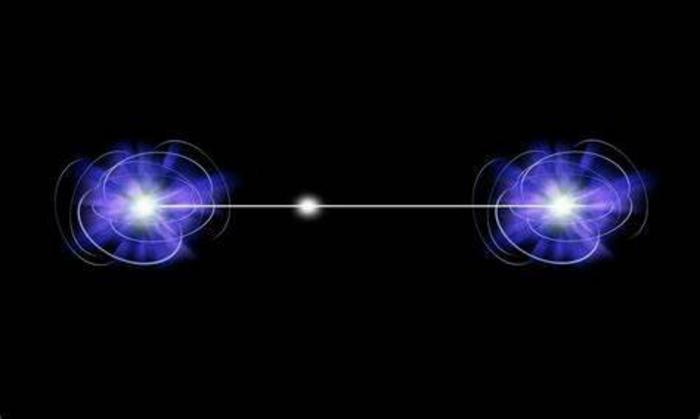Researchers from the University of Science and Technology of China (USTC) of the Chinese Academy of Sciences (CAS) and their associates from Tsinghua University, the Jinan Institute of Quantum Technology, and the Shanghai Institute of Microsystem and Information Technology (SIMIT), CAS, have successfully distributed a point-to-point long-distance quantum key over a distance of 1,002 km.
 USTC Achieves Thousand-Kilometer Quantum Key Distribution. Image Credit: University of Science and Technology of China
USTC Achieves Thousand-Kilometer Quantum Key Distribution. Image Credit: University of Science and Technology of China
This accomplishment establishes a new non-relay QKD world record but also offers a method for high-speed intercity quantum communication. On May 25th, 2023 the result was reported in Physical Review Letters.
QKD allows for safe key distribution between two remote parties and is based on the principles of quantum physics. The best level of security for sensitive communication can be achieved when used in conjunction with the “one-time pad” encryption technique. However, factors like channel loss and system noise have restricted the range of QKD.
The experiment demonstrated the twin-field QKD (TF-QKD) employing the sending-or-not-sending (SNS) protocol. It improved the relationship between the key rate and channel transmittance from linear η to its square root η. Therefore, compared to conventional QKD methods, it can reach a much longer secure distance.
The experiment demonstrated the twin-field QKD (TF-QKD) employing the sending-or-not-sending (SNS) protocol, which improved the relationship between the key rate and channel transmittance from linear to its square root. Therefore, compared to conventional QKD methods, it can reach a much longer secure distance.
The noise of the single-photon detectors was decreased to about 0.02 cps by employing several filters at temperatures of 40 K and 2.2 K to suppress dark counts brought on by thermal radiation.
In addition, the group created a dual-band phase estimation method to prevent spontaneous Raman scattering noise, which brought down the system noise to below 0.01 Hz.
With a key rate of 0.0034 bps, the team accomplished TF-QKD over a record distance of 1002 km using the aforementioned technological advancements. This study shows that the SNS-TF-QKD method can obtain high key rates in a variety of real-world settings in addition to proving its viability over very long distances.
The development of secure quantum communication will be greatly impacted by this study’s success. It paves the door for the creation of high-speed intercity quantum communication networks and offers new opportunities for long-distance quantum key distribution.
Journal Reference:
Liu, Y. et al. (2023) Experimental Twin-Field Quantum Key Distribution over 1000 km Fiber Distance. Physical Review Letters. doi:10.1103/PhysRevLett.130.210801.